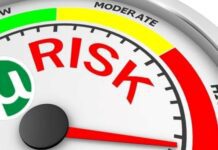
Table of Contents
Cloud Technologies has also increased the attack surface, and the probability of cyber risks has increased. However, with proper attack surface management, it is possible to minimize the exposure, and in turn, reduce the digital threats as well.
Minimizing Risk Exposure with Attack Surface Management
With more and more exposure to cyberspace, the attack surface of any institution needs to be evaluated very carefully. While it may not be entirely possible to stop all the risks, most threats can be avoided by following the best practices of attack surface management. Some of them are as follows:
-
Understanding The Attack Surface
It is becoming harder for organizations to keep track of the digital risks and digital footprints with passing days. To be able to secure something, one has to see it or understand it first. In other words, broad visibility is needed, which can be provided by attack surface analytics.
With this, the digital footprint of a company can be managed and validated. When all of the digital assets are visible, the risk of each asset can be assessed individually. As a result, risk exposures can be managed, improved processes, and resources can be allocated. All of this can only be done after understanding the attack surface first.
-
Monitoring The Endpoints Continuously
Another critical practice for reducing the exposure of risk with the management of attack software is continuous monitoring of the endpoints. With more endpoints located outside nowadays, diligence is needed. All the endpoints should have a secure hold.
This can be done by using a monitoring process that works independently. As a result, the potential threats and the behaviors that identify as risks can be targeted before any problem occurs. Hence, it is essential to have the security risks assessed by an unbiased and external viewpoint.
As for the organization’s employees, their home network and domestic connections should also be protected and monitored. At the same time, the internal control should be visible. When the internal controls of cybersecurity are visual, the attack surface risks can be reduced by monitoring the endpoints having the highest probability of getting targeted.
-
The Security Program Must Be Benchmarked Against Peers
The risk of cyber exposure and the performance of the security protocols should be assessed in the context of peers. This is a perfect strategy for reducing the risk exposure. It can be done by benchmarking the security program.
The attack surface management can be done with tools that help in benchmarking. This can highlight the gaps that are present in the security program. When done against the peers, the risk vectors can be identified.
Once it is done, the counter plans can be devised with data-driven measures. This will make sure that the goals of the cybersecurity performance are met.
-
Finding Out The Acceptable Risk Level
Since it’s impossible to stop any cyber-attack completely, the acceptable risk threshold has to be determined. This can determine the level of threats faced, and an institution can act based on the threat level.
The levels are usually measured from 250 to 900, with higher scores indicating better security. Any organization with a score less than 500 is deemed to have a very high probability of getting breached. It depends on the risk tolerance and industry, and the risk level can be set by taking such factors into account.
Final Words
By following the mentioned practices, the attack surface can be managed for any institution or company. While it may be impossible to be completely cyber-attack proof, the exposure can be minimized significantly. As a result, the risks are minimized too.
















